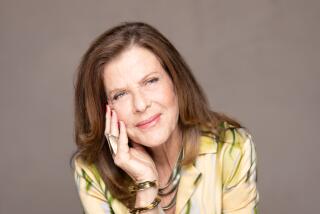A Bio-Realist Among the Architects : NATURE NEAR : Late Essays of Richard Neutra <i> edited by William Marlin (Capra: $18.95; 224 pp.) </i>
Richard Neutra was one of the more prolific architects ever to practice in the Los Angeles area, producing in a career that spanned nearly half a century about 200 varied projects. He also was one of the more public, generating lectures, essays and drawings that have filled 11 books, “Nature Near” being the last.
It seems that almost from the moment he arrived in Los Angeles in 1925, encouraged by fellow Austrian emigre architect R. M. Schindler, until he died in 1970 at age 77, Neutra was a self-appointed missionary of sorts for an enlightened modernism fashioned to serve man’s physical and psychological needs. Heightening his zeal was the region’s benign climate and youth.
“The climate of California, at least in those halcyon days before the citrus groves and bean fields were crowded out by freeways, parking lots and subdivisions, was conducive to the germination of a fundamentally fresh form of architectural growth,” he recalls in one of the essays. “I saw that buildings agleam with the materials of our own time might fraternize with the soil and the psyche of this unspoiled region.”
The resulting range of buildings he designed were very much in the machinelike International Style, with an emphasis on clean lines and an expressive structural system, responding to both interior and exterior spaces. His writings exploring the role of the biological and behavorial sciences in the art of architecture were a bit more Baroque. No doubt this reflects Neutra’s early schooling in the humanities in an imperial Vienna at the turn of the century that included six years of Greek and eight years of Latin.
Writing style aside, Neutra’s theories, which he labeled “biorealism,” constituted a refreshing approach to design in a profession then, and now, often preoccupied by the way things look rather than the way things work. As William Marlow notes in the introduction, “Neutra was really the first architect of any enduring consequence to think systemically and comprehensively about the intimate relationship of the biological and behavioral sciences to architectural and planning issues.” For this reason alone, he deserve our attention, and respect.
Just as many of Neutra’s designs appear to have been a variation on a theme, so were his writings. His arguments for a more user- and site-sensitive design were well stated in his definitive “Survival Through Design,” (first published by Oxford University Press in 1954, and in subsequent paper editions by the Institute for Survival Press), clearly explained and illustrated in Thomas Hines’ “Richard Neutra and the Search for Modern Architecture.” (Oxford, 1982), and made more personal, in “Richard Neutra: Promise and Fulfillment, 1919-1932” (Southern Illinois Press, 1986).
Still, in these last essays culled from a rich archive of writings Neutra offers a clearer vision of his humanistic design theories; certainly a more compelling personal one. It seems that knowing his career, and life, were soon to end, Neutra wanted to make sure his reasoning for a more humane and harmonious man-made environment would be heard. “By way of my beliefs as well as buildings, I have worked to leave behind a guiding trail of experience, insights, and--yes--passion, hoping this will deepen the values and raise the sights of those coming along,” he declares in the last essay in the book.
As such, it would have been helpful to know exactly when these essays were written--none is dated--and the rationale behind their organization. Neutra the architect, ever concerned with details, no doubt would have wanted it that way, and more, striving as he did in his work for perfection, however impossible to achieve in the social art of architecture.
The book also presumptuously assumes a knowledge of Neutra’s work. Some biographical material to put his essays into a broader perspective would have been helpful, such as his education at first as a humanist, then as an architect, his apprenticeship under Frank Lloyd Wright, among others, his partnership with Schindler, and some of his more challenging commissions where he tried to put his theories to test.
More to Read
The biggest entertainment stories
Get our big stories about Hollywood, film, television, music, arts, culture and more right in your inbox as soon as they publish.
You may occasionally receive promotional content from the Los Angeles Times.










